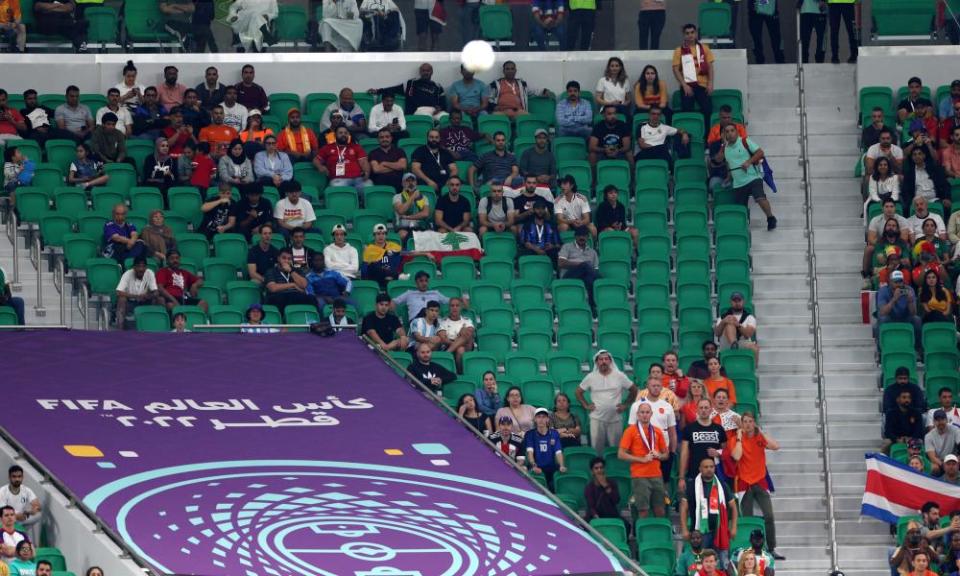As if by magic: Qatar World Cup stadium capacities grow by 12% overnight

The Qatar World Cup took another strange twist on Tuesday with the capacity of its eight stadiums officially growing by 12%.
Overnight the Al Bayt Stadium, which hosted the opening game, went from 60,000 to in the pre-tournament guide to 68,895 on the official website – while the biggest stadium, the Lusail, went from 80,000 to 88,966. It came after fans were left confused by attendances breaching stadium capacity in every game.
A source close to the organisers insisted the original numbers reflected Fifa’s requirements for stadiums to have a minimum of 80,000, 60,000 and 40,000 capacities. The Qataris have since found that the number of seats they needed for broadcast, media and sponsorship purposes was less than expected, hence the capacity increases.
The source added that the Lusail can seat 92,000 before broadcast and media requirements. Overall the combined capacities listed on Qatar’s World Cup site increased from a combined 380,000 to 426,221 on Tuesday.
A second mystery remains, however: why there seem to be a lot more empty seats than are claimed in the official attendance figures. Official figures suggest that over 88,000 people watched Saudi Arabia shock Argentina at the Lusail Stadium on Tuesday – less than a thousand shy of capacity – but pockets of available seating were visible across the venue.
The first and most likely explanation is ticket holders not showing up. The biggest gaps at all matches – especially the visibly under-attended Senegal v the Netherlands match on Monday – are those in the most expensive seats that run down the side of the pitch in the first two tiers. This could mean sponsors or invited guests have chosen not to attend.
It could also be that tickets are held by local fans who are unable to make the match. Although Fifa has confirmed that Qatar is among the nations to have bought the greatest share of the 3m available tickets, not surprising for a host nation, the precise number sold has not been published.
This week the Guardian met one Qatari fan who said he had tickets for 20 matches. These were bought using two separate Fifa accounts, an unauthorised practice, and he said the majority of his friends had done similar. Finally it is possible that foreign visitors, who bought tickets in the original ballot, have chosen not to travel.
One further possible explanation is the system used on the ground to sell tickets that have been returned or not sold. A central office at the DECC metro station in the West Bay of Doha offers constant access to available match tickets. But the sales system does not always show every match for sale, with most fixtures appearing to be sold out until the digital displays refreshes to show new options.

Other possible factors include problems with the digital ticketing systems, with “ticket resolution” centres the site of substantial queues in the run-up to both the Saudi and England matches.
It is certainly the case, however, that organisers have talked up the number of people coming to the tournament – with Fifa’s president, Gianni Infantino, saying on Friday: “Three million people will be in the stands watching.” That claim is not always matching up to the eye test.

 Yahoo Sport
Yahoo Sport 





































